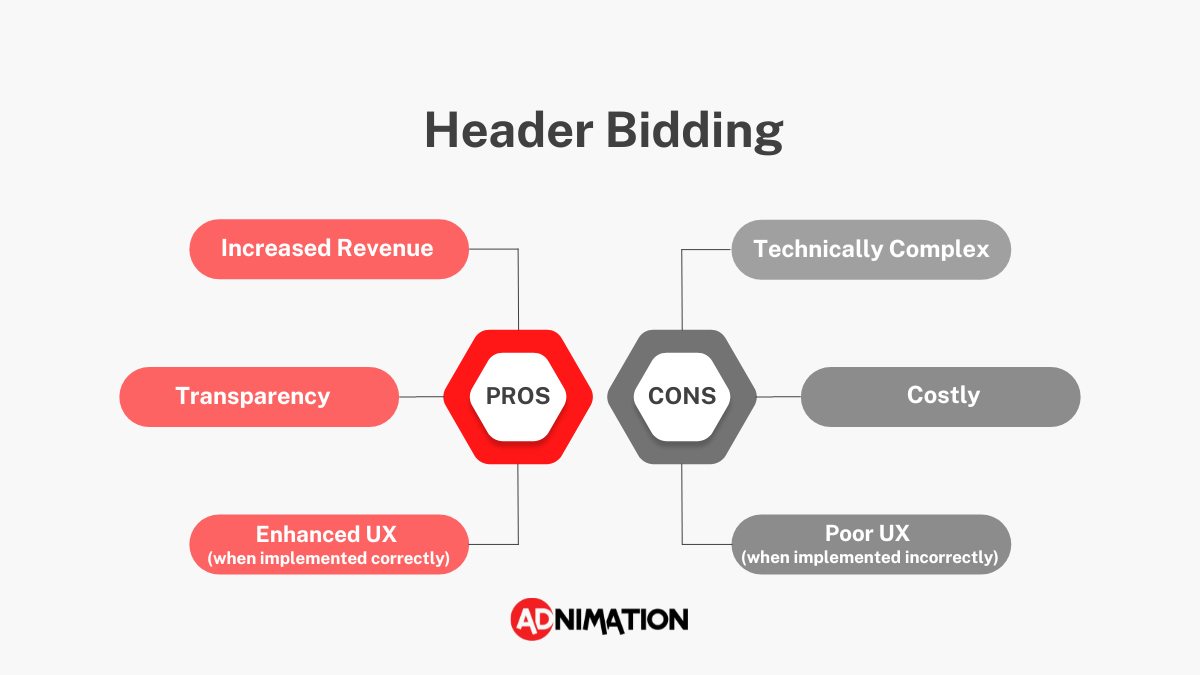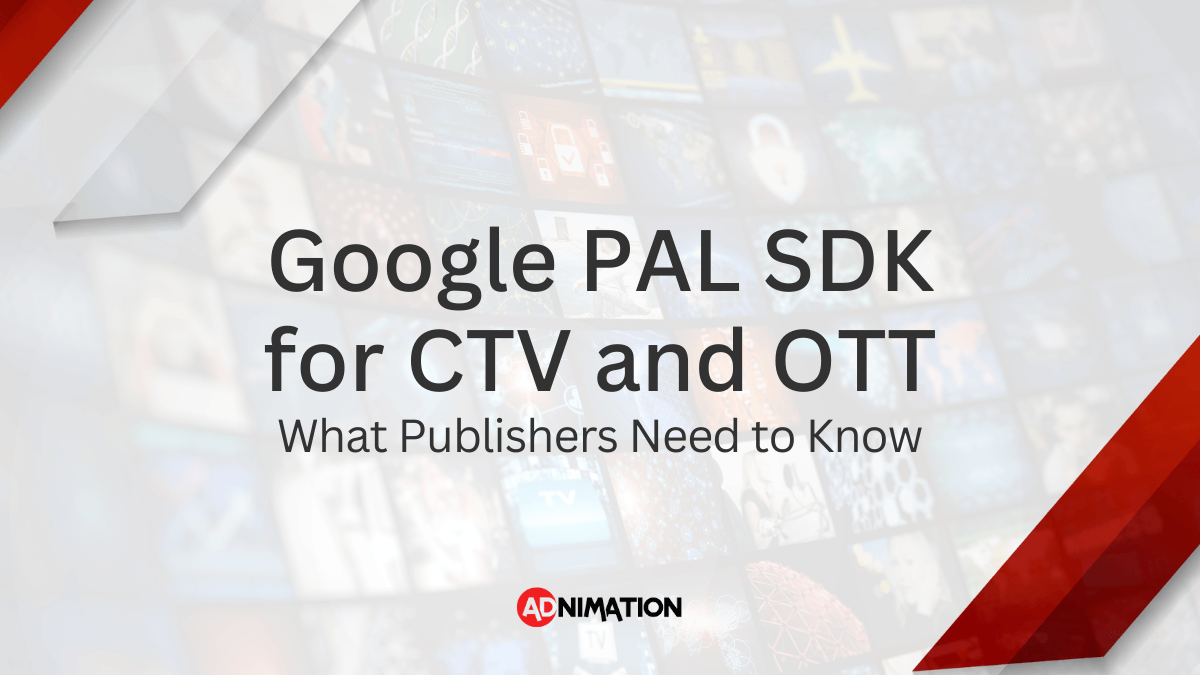Header bidding is an absolute must for publishers.
Since it burst onto the scene in 2015, it has become the most popular and valuable programmatic advertising tool in the industry.
And for good reason.
Header bidding enables you to offer your ad inventory to multiple demand partners simultaneously, increasing competition and boosting your revenue.
If you’re looking for more information about header bidding, you’ve come to the right place. We will explain all that there is to know, and also discuss the newest iteration of header bidding – hybrid header bidding.
What is Header Bidding?
Header bidding is a sophisticated programmatic advertising technique that allows multiple advertisers to bid on your ad inventory before the page even loads.
The key to the success of header bidding is increased competition.
Imagine that you are selling your car, and the minimum you are willing to sell the car for is $20,000. One week, two weeks, three weeks pass, and finally someone agrees to buy your car for $20,000.
Now, imagine that if instead of just one buyer, there were 10 buyers vying to purchase your car. Rather than selling it for just $20,000, you could leverage the competition and drive up the price. Now, you are able to sell your car for $30,000.
That is the idea behind header bidding – leveraging as many quality advertisers as possible to increase your revenue.
Without competition, you are essentially granting a monopoly to one demand partner, which has no incentive to sell their ads to you at a high price.
How Does Header Bidding Work?
Header bidding works by adding a small piece of code called a header bidding wrapper to your website’s ad code in your header.
The process is as follows:
- When a user visits your website, the wrapper sends a request to multiple demand partners simultaneously.
- Each demand partner then evaluates the ad request and responds with a bid for the ad inventory.
- The highest bid is then passed on to your website’s ad server, where it is compared to the bids received from other demand sources.
- The ad server then selects the highest bid and serves the ad to the user, all in real-time.
This entire process takes place in milliseconds, allowing for a seamless user experience.
Pros and Cons of Header Bidding for Publishers
Pros
Increased Revenue
As you understand by now, the biggest advantage of header bidding is that it generates higher revenue for you.
More Transparency
Header bidding provides transparency in the ad bidding process, as all demand partners have an equal opportunity to bid on the ad space.
Enhanced User Experience (Correct Implementation)
If implemented correctly, header bidding can reduce latency and lead to a better user experience.
Cons
Technically Complex
Header bidding is technically complex and requires significant resources to implement in-house.
Poor User Experience (Incorrect Implementation)
If implemented incorrectly, header bidding can increase the page load times and harm your user experience.
Costs
For publishers who do server-to-server header bidding (see below) in-house, the auctions can be costly as it requires additional server resources.
Types of Header Bidding
There are three types of header bidding: client-side, server-to-server, and hybrid header bidding.
Client-Side Header Bidding
Client-side header bidding is when the bidding process occurs on the user’s web browser.
To implement this process, publishers use JavaScript code on their website to offer their ad inventory to demand partners in real-time.
The code is executed once the page loads, and the user’s browser sends ad requests to multiple demand partners who then compete for the ad space.
Server-to-Server Header Bidding
Server-to-server (S2S) header bidding is when the bidding process occurs on an external server.
In this scenario, publishers store their ad inventory on an external server and share it with demand partners through an API.
This means that instead of the auction taking place on the user’s web browser, the entire process happens on the external server.
Hybrid Header Bidding
Client-side and S2S each have their own pros and cons.
Hybrid header bidding utilizes the pros from each method to maximize ad revenue.
It does this by sending requests to both the user’s browser and an external server, and selects the winning bid from both auctions.
How to Implement Header Bidding
If you are looking to implement header bidding in-house, follow these steps:
Find Demand Partners
Get in contact with premium demand partners that would like to advertise on your website. If you are a small or medium-sized site, this process could be challenging and demand partners prefer to work with large sites.
Create a Header Bidding Wrapper
Develop a strong and clear wrapper that will be able to send out your ad requests.
A good way to create a wrapper is with prebid.js, but the process is still complex. Alternately you can get a wrapper from a reliable monetization company that will implement the header bidding for you.
Configure Your Requirements
To effectively implement header bidding, you need to configure your desired requirements like floor prices and auction time limits.
Monitor and Optimize Your Performance
Simply implementing header bidding is not enough to ensure a steady stream of revenue. You need to monitor and optimize header bidding to ensure that you are maximizing your ad revenue potential.
What Is prebid.js?
Prebid.js is one of the most popular header bidding wrappers on the market.
It is an open-source header bidding wrapper that provides easy integration with more than 300 demand sources and 50 analytics adapters.
What is Open Bidding?
With the rise of header bidding, Google released its own technology called Exchange Bidding or EBDA (Exchange Bidding in Dynamic Allocation). It later rebranded it as Open Bidding.
Open Bidding is Google’s server-to-server header bidding solution that allows publishers to add other demand partners to compete with Google AdX.
The entire process executed on Google Ad Manager.
What is a Waterfall?
Waterfall is the less-effective predecessor of header bidding.
In a programmatic waterfall, ad requests were sent to a single demand partner. If that partner could not fill the ad request, it was then passed to the next partner in the waterfall.
The waterfall approach had several limitations, including reduced competition among demand partners, long load times for users, and limited transparency into the ad auction process.
Publishers had to rely on a single demand partner at a time, and this led to lower ad revenues as demand partners could manipulate the process to their advantage.
With the introduction of header bidding, the waterfall model became obsolete.
Bottom Line
As a publisher, you need header bidding.
Without it, you are losing out on vital revenue.
Header bidding is a technically complex process to implement. If you choose to do it in-house, make sure that every step is executed meticulously. Otherwise, it could lead to a lot of lost revenue.
Our suggestion is using a trusted Google Certified Publishing Partner (GCPP) like Adnimation.
We can oversee your header bidding implementation and optimization from A to Z, and also provide you with our proprietary hybrid header bidding technology.
For a free consultation, feel free to reach out to our experts today.





